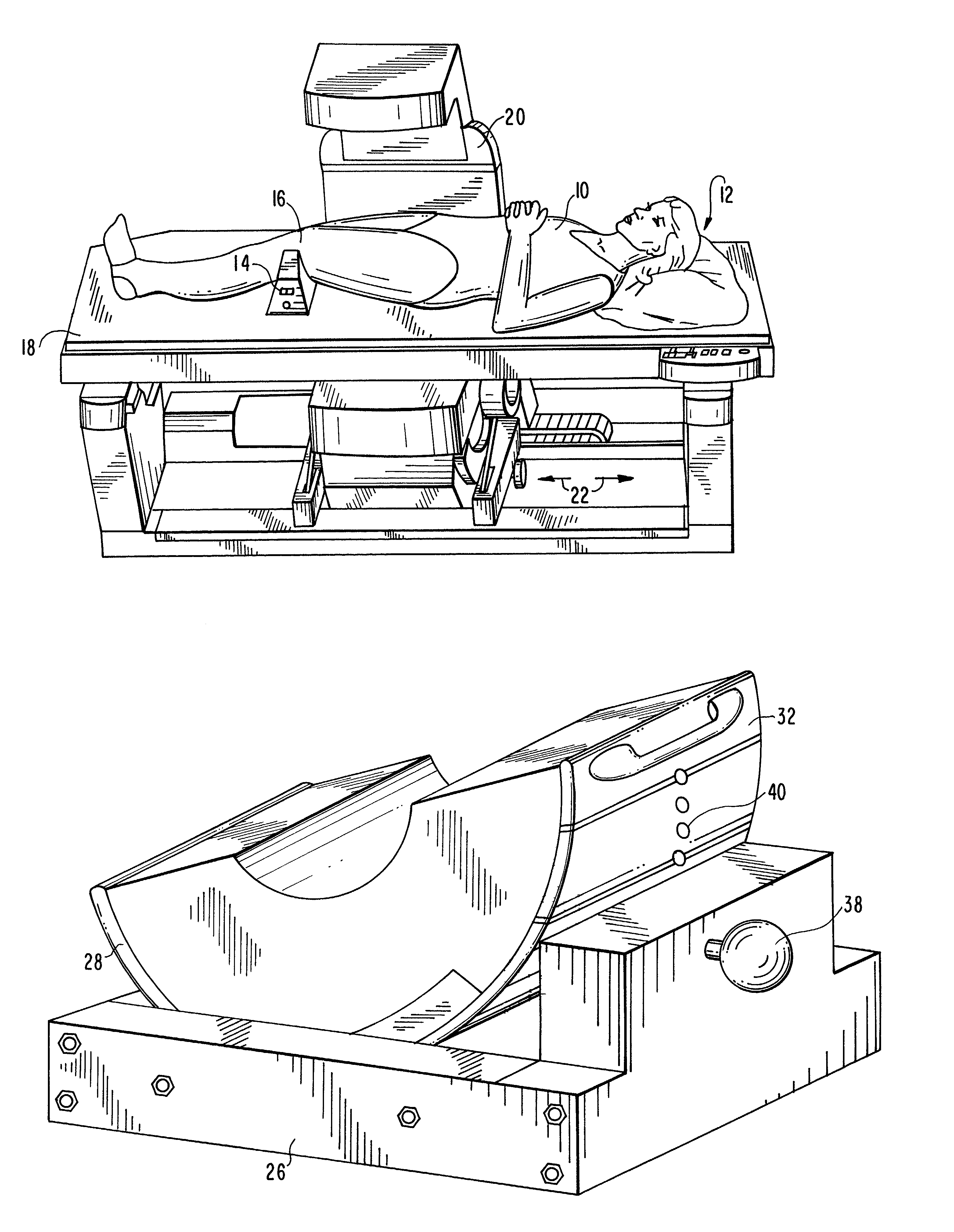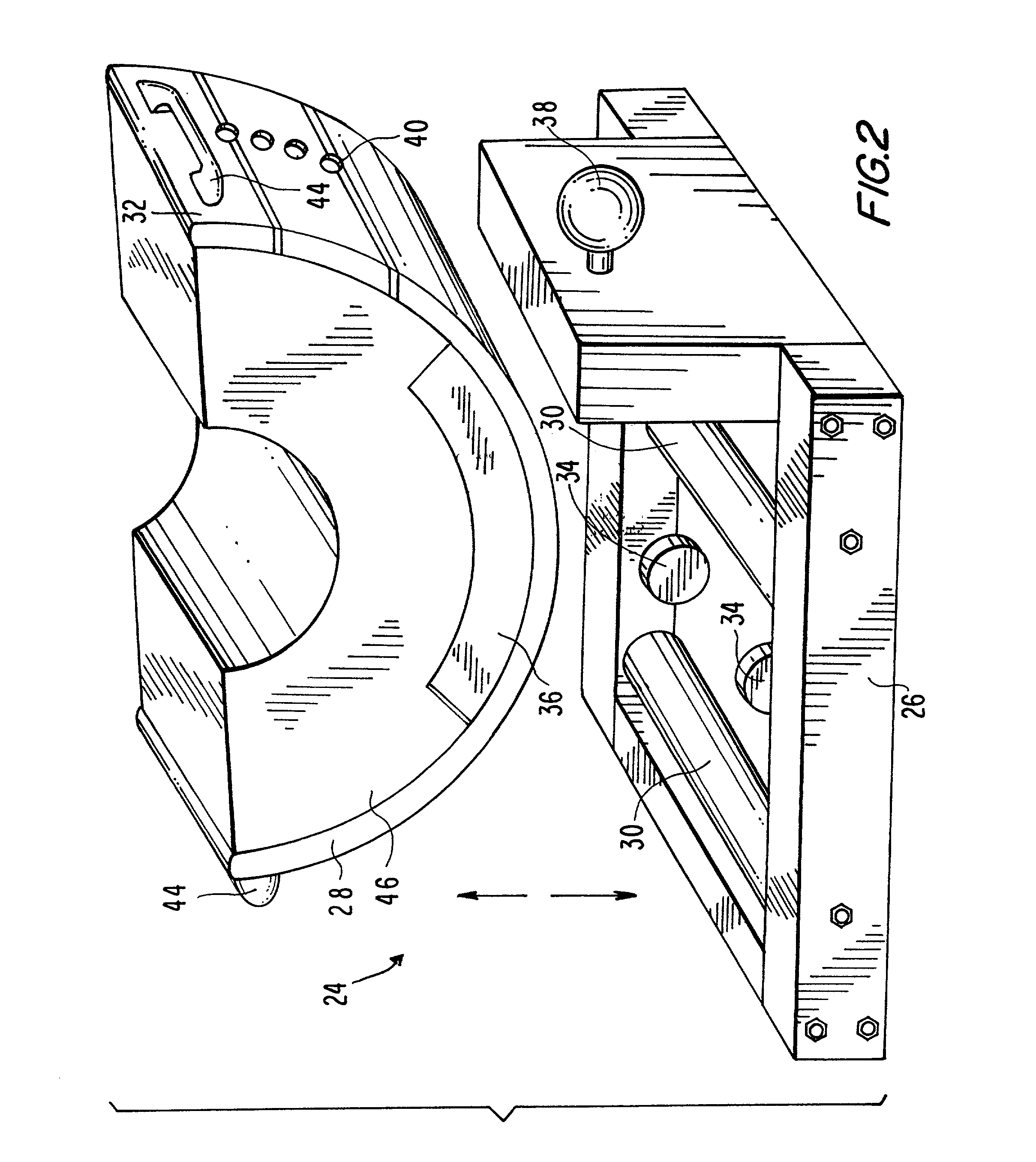Device for the calibration and standardization of hip rotation
a technology for hip rotation and hip movement, applied in the field of hip rotation and hip rotation standardization, can solve the problems of increasing the risk of fracture, and increasing the risk of fracture, and achieving the effect of standardizing hip rotation and/or movemen
- Summary
- Abstract
- Description
- Claims
- Application Information
AI Technical Summary
Benefits of technology
Problems solved by technology
Method used
Image
Examples
Embodiment Construction
[0026]The present invention is directed to a device for the calibration and standardization of the rotation and movement of a patient's hip. It is within the scope of the invention that the device could be used for any medical, especially orthopedic, procedure. The present invention particularly relates to a device for the calibration and standardization of the rotation and movement of a patient's hip for use in connection with improving the reproducibility and accuracy of diagnostic procedures, such as bone density measurements using dual x-ray absorptiometry (DXA). It is within the scope of the invention that the device could be used with MRI or CATscan procedures as well.
[0027]The current invention provides a simple, effective, removable device to eliminate one of the major sources of variation involved in using diagnostic equipment and help lower the precision error ratio of such machines and measurements. The patient's knee is secured in a flexed position in the device of the i...
PUM
 Login to View More
Login to View More Abstract
Description
Claims
Application Information
 Login to View More
Login to View More - R&D
- Intellectual Property
- Life Sciences
- Materials
- Tech Scout
- Unparalleled Data Quality
- Higher Quality Content
- 60% Fewer Hallucinations
Browse by: Latest US Patents, China's latest patents, Technical Efficacy Thesaurus, Application Domain, Technology Topic, Popular Technical Reports.
© 2025 PatSnap. All rights reserved.Legal|Privacy policy|Modern Slavery Act Transparency Statement|Sitemap|About US| Contact US: help@patsnap.com



